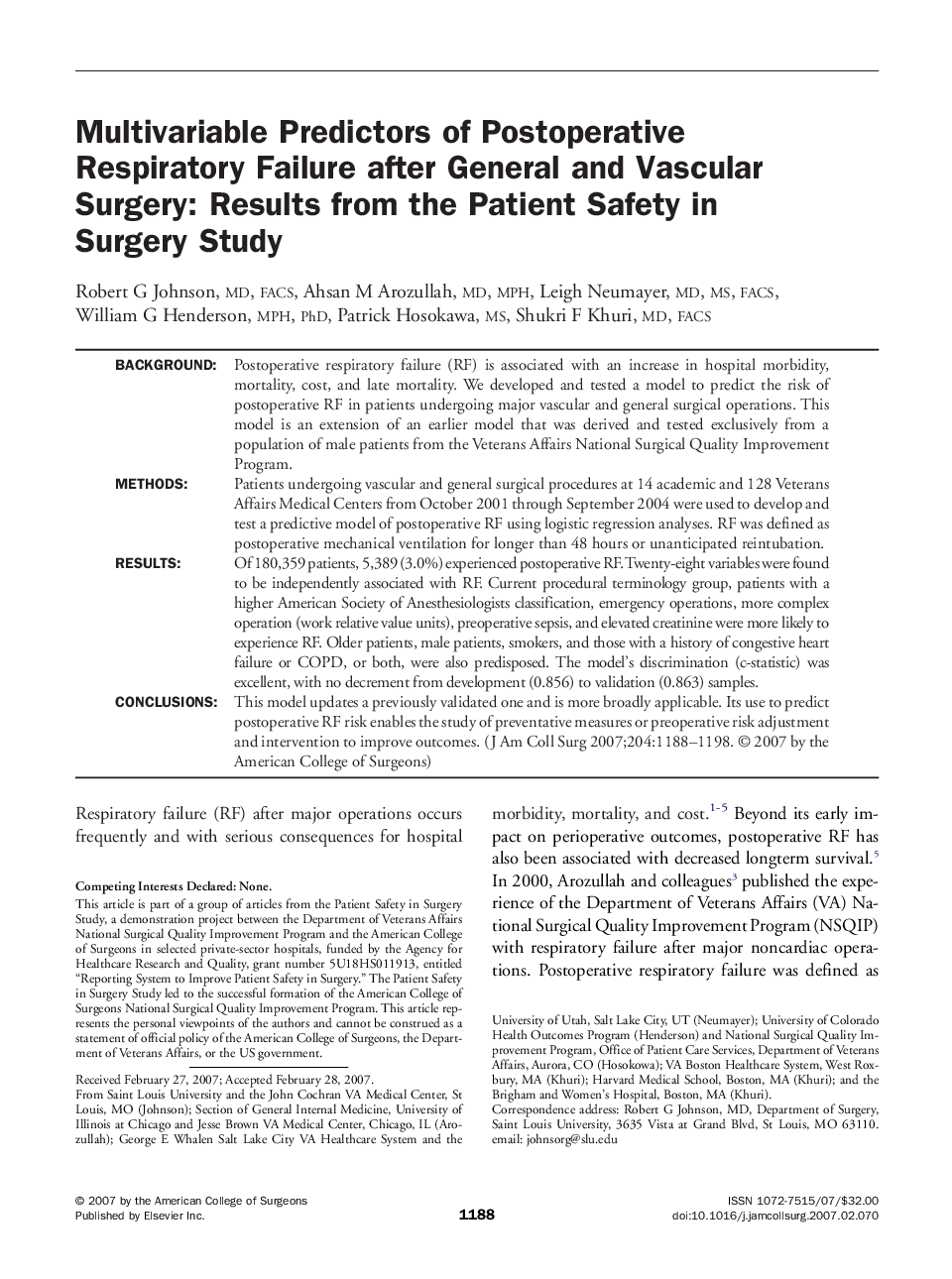| Article ID | Journal | Published Year | Pages | File Type |
|---|---|---|---|---|
| 4294298 | Journal of the American College of Surgeons | 2007 | 11 Pages |
BackgroundPostoperative respiratory failure (RF) is associated with an increase in hospital morbidity, mortality, cost, and late mortality. We developed and tested a model to predict the risk of postoperative RF in patients undergoing major vascular and general surgical operations. This model is an extension of an earlier model that was derived and tested exclusively from a population of male patients from the Veterans Affairs National Surgical Quality Improvement Program.MethodsPatients undergoing vascular and general surgical procedures at 14 academic and 128 Veterans Affairs Medical Centers from October 2001 through September 2004 were used to develop and test a predictive model of postoperative RF using logistic regression analyses. RF was defined as postoperative mechanical ventilation for longer than 48 hours or unanticipated reintubation.ResultsOf 180,359 patients, 5,389 (3.0%) experienced postoperative RF. Twenty-eight variables were found to be independently associated with RF. Current procedural terminology group, patients with a higher American Society of Anesthesiologists classification, emergency operations, more complex operation (work relative value units), preoperative sepsis, and elevated creatinine were more likely to experience RF. Older patients, male patients, smokers, and those with a history of congestive heart failure or COPD, or both, were also predisposed. The model’s discrimination (c-statistic) was excellent, with no decrement from development (0.856) to validation (0.863) samples.ConclusionsThis model updates a previously validated one and is more broadly applicable. Its use to predict postoperative RF risk enables the study of preventative measures or preoperative risk adjustment and intervention to improve outcomes.
